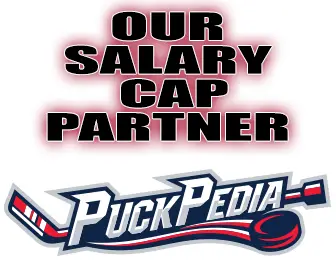Detroit Red Wings
Breaking Down the Deal: A Beginner’s Guide to NHL Trades
From salary cap rules to no-trade clauses, here’s what every fan should know about how NHL trades actually work.
Whether you’ve followed the hundreds of transactions over the past couple of seasons or are just beginning to follow NHL trade news, having an idea of how the machinery of player trades functions is important.
NHL trades are often far more complex than a simple player-for-player deal. In fact, it’s rare these days to see two teams trade a player one-for-one. From salary cap ramifications to no-trade provisions, there’s a great deal that goes into each transaction. It’s no wonder many of the rumored deals fall apart when it comes time to dot the Is and cross the Ts.
Here’s your ultimate guide to NHL trades.
The Fundamentals: What Is an NHL Trade?
Technically, an NHL trade is an agreement between two (or sometimes multiple) teams to exchange assets—in most cases, players, draft picks, or future assets. Teams may make trades to plug holes at positions, rid themselves of salary, rebuild with young assets, or push for a playoff run.
The Salary Cap: The NHL’s Fiscal Structure
The NHL’s hard salary cap dictates that no team can exceed the cap number set by the league (except for special exceptions like long-term injury or during the summer before the upcoming season begins). This forces GMs to become creative. The cap is currently $95.5 million for the 2025-26 season. It is projected to go up to $104 million in 2026-27 and $113.5 million in 2027-28.
Players are often traded because of the need for teams to become cap compliant as much as because of their play. A player, for instance, might be traded simply to create space on the cap, even if a team would rather hold on to a player they deem valuable.
Retained Salary: A Tool of Cap Flexibility
Part of a traded player’s salary can be kept by teams (up to 50%) to make a trade more appealing to the acquiring club. There is a limit to how many retained salaries a team can take on at any one time (three), but the idea is to entice another team to take on part of a player’s contract.
This is often done on older players or on free agents who were signed but later deemed as not having lived up to expectations.
Example: If the player has a cap hit of $5M, the former team is able to retain 50%, and the latter team is only dinged a $2.5 million cap hit on their books.

No-Trade and No-Movement Clauses
These days, it’s rare when players don’t have some form of trade or movement protection worked into their contracts. NTCs (No-Trade Clauses) or NMCs (No-Movement Clauses) limit where they can be traded, giving the player some element of control over their future.
NTC: Player submits list of teams he can/cannot be traded to.
NMC: Prevents a player from being optioned or waived to the minors in addition to trades.
These features give players bargaining power and usually make the negotiations harder, especially at the trade deadline. It limits NHL clubs to using buyouts as the last remaining means to remove a player’s contract. A buyout gives a player a portion of their contracted salary while also making them a free agent who can sign with another team once the buyout is complete. In essence, a team keeps paying a portion of the salary for the remainder of the contract, while the player gets paid twice, first by the old team and again by the new team he signs with.
Conditional Draft Picks and Future Considerations
“Future considerations” typically involved low or implied compensation, oftentimes a token in salary dump transactions.
Some trades involve conditional draft picks based on performance, which differ depending on the circumstances. For example, if the player signs with the new team or achieves a scoring milestone, the draft pick compensation could improve.
Three-Team Deals
To make the money fit, three-team transactions occasionally happen. Team A trades a player to Team B, who immediately trades him to Team C, usually with salary retained along the way. They are rare but increasingly frequent with tough cap issues. The third team is typically one that has additional cap space it can weaponize in exchange for a prospect or pick.
Waivers and Trade Eligibility
Not all players are free to trade. Two-way players might need waivers to be sent to the AHL, which impacts their trade value. Furthermore, after the trade deadline, teams cannot trade for players who are playoff-eligible.
Why Understanding Trades Matter
Here at NHL Trade Talk, we focus a lot on trades and speculation surrounding potential deals. However, with each post, we take into consideration all of the above factors to ensure we’re not curating or sharing reports that are illogical or not feasible.
Starting a rumor about a trade is easy. However, many reports often overlook the leverage a player has in any deal or how a move might affect a team’s salary cap. Furthermore, when fans are quick to say, ‘There’s no way a team makes that deal, ‘ it’s sometimes because that same fan lacks the knowledge of why a star scorer would be traded for seemingly little in return. Sometimes, teams find themselves in the unfortunate position where they have little choice.
The more you know about the rules, the more you’ll know about front-office moves.
Trades are often about timing, money, contracts, and leverage. Seldom are they because one team likes Player A more than Player B.
Next: Without Trade, Oilers May be Forced to Overpay on Ekholm Extension
























